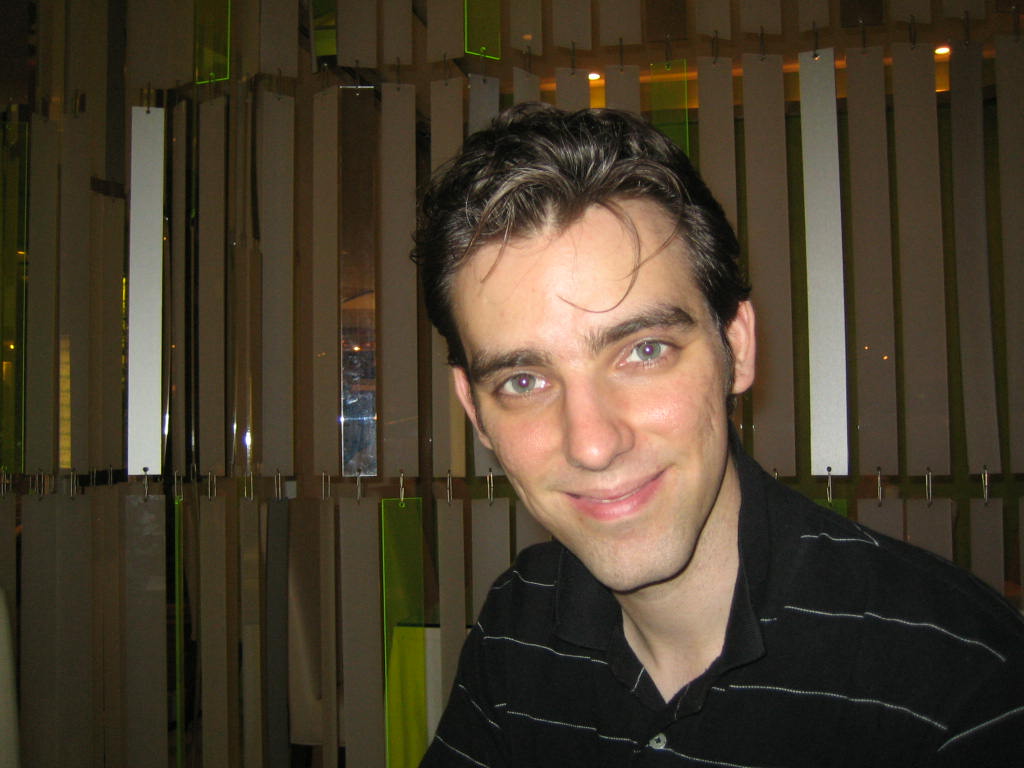Scottsdale cryonics group thriving despite controversy Craig Harris and Peter Corbett
The Arizona Republic
Oct. 19, 2003 12:00 AMhttp://www.azcentral...cor-main19.htmlForty-three heads. Eighteen bodies. Eleven dogs. Eleven cats. One monkey.
In the back of a quiet, nondescript office complex near the Scottsdale Airpark, heads and bodies of humans and animals are frozen, upside down, in massive 9-foot-tall steel tanks at the Alcor Life Extension Foundation.
The humans and pets are being retained in a liquid nitrogen bath at minus 320-degrees Fahrenheit with the hope that scientific advances will someday bring them back.
It's a lofty goal and one that Alcor has quietly pursued for much of its 31-year history. But the company's low profile was catapulted into the limelight the past few months.
Alcor has been accused of mishandling the body of baseball legend Ted Williams, its chief executive is stepping down following internal strife and a criminal inquiry is under way in Los Angeles.
Alcor has thrived, nonetheless.
Membership stands at an all-time high. Donations hit a record last year. And the organization has $5.4 million in accumulated net assets, even though its scientific premises are widely dismissed.
"Financially, we bubbled in the last year," said Carlos Mondragon, Alcor's spokesman and a longtime board member. "We certainly can't complain."
Still, the small organization, named after a star in the Big Dipper, remains highly controversial. The Arizona Republic has learned:
• Alcor was given tax-exempt status by the Internal Revenue Service three decades ago as a scientific research and education organization, but one official acknowledges little research is being done.
• Although Alcor officials have vigorously denied engaging in cloning, records show Alcor's founders set up a business in Scottsdale in 1998 to work on potential cloning.
• The Los Angeles Police Department is investigating a 1992 death of an Alcor member as a homicide after an ex-employee alleged the death was hastened.
• A former Alcor executive disclosed documents and tape recordings that could be used to try to prove that Alcor and Williams' youngest children sidestepped the baseball great's wish to be cremated, as stated in his 1996 will.
Dr. Jerry Lemler, Alcor's CEO, who will relinquish the job Dec. 31 following blistering allegations of mismanagement by another member, said he could not comment about the police investigation.
Lemler, who is fighting lymphoma, reiterated that Alcor is not involved in cloning and said that the organization is meeting its tax-exempt requirements by educating the public about cryonics: preserving body parts after death with the hope that future science will bring them back to life.
Charles Platt, a former executive, accused Lemler this summer of overspending, nepotism and ineffectiveness, but the organization has never been healthier financially.
Under Lemler, Alcor raised a record $2.4 million last year, thanks to three large gifts and a record eight members dying and being cryonically stored at Alcor. Membership has increased 21 percent, to 656, since Lemler became president/chief executive officer in September 2001.
Lemler, who will become Alcor's medical director and spokesman after giving up the top job, said most members are highly educated adults with a background in science and math. Men dominate the membership 3-1.
Platt, a science-fiction writer who has a home near Ashfork, said that the memo he wrote is now a "dead issue" and that it's typical for Alcor members to get emotional.
"The purpose of cryonics is to address the problem of death. Whether or not it's successful, we don't know. But when you have people who are united by that common bond, they tend to live at a more intense level," Platt said.
"You are looking at a bunch of people who are trying to beat death."
Frozen storageIn its 20,000-square-foot warehouse, Alcor stores 58 humans, with 43 being "neuros" (heads only) and 18 being whole bodies. Three of the clients' heads were removed, but their bodies also were frozen.
The last suspension, Alcor's term for cryonic storage, was in March. The bodies come from all over the United States, Australia and Britain.
In addition to preserving animals, Alcor stores frozen sperm and ovaries in the tanks. No state laws prohibit any of the storage.
But that could change. The Arizona State Board of Funeral Directors is pushing for legislation in the next session to regulate cryonics labs, said Randy Bunker, board president.
"We need some oversight and accountability in order to protect consumers and the integrity of human remains," Bunker said.
Matthew Sullivan, Alcor's director of suspension readiness, said it would be "inappropriate for funeral directors to regulate cryonics, a field completely outside their experience or expertise."
But Lemler said if Alcor was regulated by some state agency, it would help legitimize the company's practices in the minds of the public.
When neuropreservation occurs, the heads are placed in blue "sleeping bags," or specially made pillowcases that are placed in large canisters that resemble soup pots. Bodies are placed in Dacron wool sleeping bags and stored upside down and strapped to an aluminum storage container.
Sullivan said bodies are kept upside down in case there is a failure in the storage tanks.
"We don't believe our identities rest in our toes. Instead, it's our brains. We prefer to keep that cold for as long as possible," Sullivan said.
Alcor's most famous client, Ted Williams, is stored in two containers, his severed head in one, the rest of his body in another.
His presence at Alcor sparked a bitter legal dispute last year among his children over their father's wishes for his remains.
John Henry Williams and Claudia Williams, his youngest children, produced a note that said their father wanted to be cryonically preserved. Their half sister, Bobby Jo Ferrell, believes her father wanted to be cremated, as stated in his 1996 will.
Now, documents copied by former Alcor executive Larry Johnson show that Ted never signed an Alcor consent form. That could open the door to new legal action to get Williams' remains out of cold storage.
Financial benefitIn 1972, the IRS gave Alcor non-profit, tax-exempt status when it was founded as the Alcor Society for Solid State Hypothermia in California. Since then, it has not paid taxes on any income raised, and it has built a strong financial base, thanks to generous donors and its members, most of whom pay annual dues of $398.
When a client dies, Alcor charges $50,000 for neurosuspension or $120,000 for the entire body. Clients wear silver bracelets to inform medical personnel that their bodies are to be shipped to Alcor, though arrangements usually are made before death.
About 95 percent of the members take out life insurance policies that name Alcor as the beneficiary to pay for their preservation and operate the foundation.
Major donors, who make annual gifts ranging from $10,000 to $120,000, are Saul Kent, a board member; Future Electronics, a Canadian company operated by billionaire Robert Miller; Laughlin, Nev., casino owner Don Laughlin; and the estate of TV writer-producer Dick Clair of The Carol Burnett Show.
When Alcor was formed, officials said its purpose was to "conduct, promote, encourage and further research and study the field of cryobiology."
But today, Sullivan said, little research is being done.
"We have enough to do with cryonics," Sullivan said. "We would love to do more research, but we need more money and staff."
Sullivan said the "only research going on, if you want to call it that," is a study of cracking in frozen skulls.
But Lemler said Alcor, which has nine employees, is "absolutely" meeting its tax-exempt requirements, and it is educating the public about cryonics. He also said Alcor's "whole project is research."
The IRS would not comment on Alcor's non-profit status.
No regulationUntil about 1997, Alcor members with no formal medical training assisted or performed the surgeries. Since then, state-certified surgeons do the operations, Lemler said.
Alcor's practices fall under no state regulatory agency. Lemler said Alcor is much like a medical school that is covered under the federal and state Uniform Anatomical Gift Act.
"Various organizations have attempted to regulate us, (like) the funeral board and health commission," Lemler said. "Now we are under the radar screen."
Although Alcor has had few problems here, a competing cryonics company, the Cryonics Institute outside Detroit, has been temporarily shut down by Michigan for operating as an unlicensed mortuary-science establishment and a non-registered cemetery.
Another cryonics company called Suspended Animation, which started last year in Rancho Cucamonga, Calif., has moved to Boca Raton, Fla.
Lemler said advances in stem cell research and nanotechnology lend credibility to Alcor's efforts, even if most people don't embrace Alcor's beliefs in future reanimation.
Nanotechnology is a hybrid science of engineering and chemistry whose goal is to manipulate atoms for a desired purpose, like battling diseases. Ultimately, Alcor hopes to use nanotechnology to bring people back.
"We tend to agitate people," Lemler said. "But as more of the public becomes aware of future life, the less discomfort they will have."
Run at cloningAlthough Alcor believes its dead clients could someday return, officials often have said the firm was not involved in cloning.
But in 1999, Alcor board member Kent's Life Extension Foundation in Florida made a $100,000 grant to a Scottsdale-based start-up called BioTransport, which would assist in cloning research, according to Life Extension records.
Foundation records said some of the research involved "the removal of human skin cells, culturing them (inducing them to divide) for several weeks . . . and then reanimating them for possible cloning."
Arizona Corporation Commission records show that BioTransport was headquartered at Alcor and that two of the four BioTransport directors were Fred and Linda Chamberlain. The Chamberlains founded Alcor in 1972. They were the secretary and president, respectively, of Alcor until 2001.
Kent is listed as one of two shareholders in BioTransport.
The Chamberlains could not be reached. Kent declined to comment.
A November 2001 Alcor newsletter said that the Chamberlains used money from BioTransport to start another company called Cells4Life, which would "offer cold storage for DNA samples with the possibility of future cloning."
Cells4LifeThe newsletter also said Cells4Life was intended to generate revenue "that could be diverted, in part, back to Alcor." Cells4Life is now out of business.
Alcor also is listed as the owner of Alcor Biobank and Alcor DNAbank, according to state records. Those "molecular biology related services" businesses were first registered to Alcor in 1997 and renewed in 2002. Lemler said he did not know why Alcor owned those companies.
Police investigation
Los Angeles police are investigating whether an Alcor recovery team euthanized a dying AIDS patient in 1992. The case was opened this summer after Alcor operations chief Larry Johnson, who resigned in August, tape-recorded conversations with other Alcor officials about the incident and turned them over to police.
Detective Brian Carr said he has listened to the tapes, but his work on other cases has kept him from interviewing Alcor officials.
"It's going to be a long process," Carr said, adding that it could take weeks or months to complete the investigation.
On the tapes, a man identified as Hugh Hixon, an Alcor board member and facilities engineer, explains the circumstances of the man's death. Hixon said he watched a former top executive of Alcor administer a dose of a paralytic drug that hastened the death.
Grim allegationThe Republic is not identifying the executive because no charges have been filed.
"(The Alcor executive) gave it to him, and seven or eight minutes later it worked. . . . The guy quit breathing," Hixon said.
Hixon declined to comment on the tapes and referred calls to Alcor's attorney, Ron Carmichael, who did not return calls.
Reach the reporters at craig.harris@arizonarepublic.com or (602) 444-8995 or peter.corbett@arizonarepublic.com or (602) 444-6862.














































